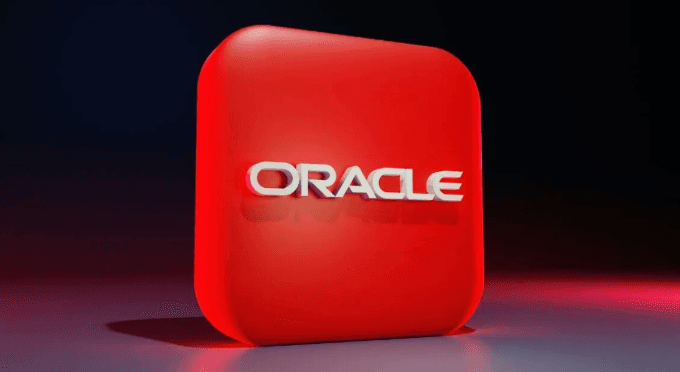Rising Medical Premiums: What It Means for Health Care Stocks in 2025


Expect to pay more for your health coverage in 2026.
That was a key takeaway from Mercer's 2025 National Survey of Employer-Sponsored Health Plans. It showed that the average cost of health benefits per employee is expected to rise 6.5% in 2026 – the biggest jump in 15 years.
And that's with employers doing their best to cut costs – without those efforts, that number would be closer to 9%. But most businesses are taking action. The survey determined that 59% of employers will make cost-cutting changes to their plans in 2026, up from 48% in 2025 and 44% in 2024. But even these moves affect employees – higher deductibles and steeper out-of-pocket costs are the trade-off.
If you get your health insurance through the Affordable Care Act ("ACA") Marketplace, the news isn't much better. Across more than 300 insurers, research projects a median proposed premium increase of 18% in 2026... about 11 percentage points higher than 2025. That's the largest rate change requested by insurers since 2018. ACA Marketplace insurers, on average, will raise premiums by around 20% in 2026.
These growing costs will continue to impact households across America, businesses that provide health coverage for their employees, and Wall Street.
Premium hikes don't just strain budgets – they reshape the health care market. But if you currently invest or are looking to invest in health care stocks, it's important to understand the shifts already underway.
Why Rising Premiums Matter for Health Care Investing
To understand how rising premiums impact the health care market, it's important to know why premiums are increasing in the first place. And there are several key drivers behind the growing costs of health care.
- Medical inflation: Medical inflation is the growth in the usage cost of health care services and medications, and it usually increases faster than the general inflation rate. If overall inflation is around 3%, medical inflation might be closer to 3.3%, as it was in June 2024. The gap means medical services – from routine checkups to long hospital stays – become more expensive year after year, and premiums rise with them.
- Chronic illness and high-cost treatments: As more Americans suffer from chronic conditions like diabetes, obesity, and heart disease, more ongoing and long-term care is required. According to the Centers for Disease Control and Prevention, 3 in 4 American adults have at least one chronic condition, making these conditions widespread. The prohibitive cost of treating these conditions is a significant cause of more expensive insurance premiums.
- Specialty medications: A spike in the use of high-cost specialty drugs, such as GLP-1s for diabetes and weight loss, is a huge driver of rising health care costs for employers and plan members. For example, GLP-1 drugs can cost anywhere from $1,000 to $1,500 a month – a major reason insurance companies anticipate an 8% to 9% increase in 2025 health care costs. And those costs are impacting consumers who aren't even taking GLP-1 medications.
- Higher demand for care: More Americans are using health care services than ever before. This is partly due to a growing population, but research shows that more Americans are seeking preventative care, rather than just going to the doctor when they're sick.
- Labor costs: Constant staffing shortages drive up labor costs for health care providers. For example, the average wage for a nurse practitioner has increased 9.7% since 2023. Those costs are passed on to insurers and then to consumers through higher premiums.
- Aging population: As Baby Boomers age, a larger part of the population requires costly medical care. Think joint replacements or long-term nursing care. This demographic shift alone has put a growing pressure on the health care system.
As we mentioned, many employers that provide health care coverage to their employees are implementing cost-reduction measures and emphasizing the importance (as well as incentivizing) company wellness plans. It just isn't enough to mitigate health care cost increases in 2026.
For health insurers, rising premiums are generally a direct reaction to a higher volume of expensive health care costs (emergency-room visits, prescription drugs, etc.), which increases the number of claims they must pay. More paid claims equal less profit… which equals lower earnings… and then a drop in stock price.
The impact of rising health care premiums also reaches hospitals and providers. If higher premiums compel more consumers to drop or reduce their insurance, hospitals may need to pivot and charge other plan members higher rates to minimize their losses. And those rates get passed along to insurers and employers.
And, as you can guess, that means employers either absorb the higher costs and eat into their own profits, or that cost trickles down to their employees via costlier deductibles and out-of-pocket expenses.
Rising health care premiums benefit no one – insurers, providers, employers, consumers, or investors.
When premiums rise, health care stocks suffer. Look no further than UnitedHealth (UNH) during the second quarter of 2025. Higher medical costs led to UNH announcing that its 2025 outlook did not meet Wall Street's expectations. The immediate reaction was a 7% drop in share price.
Additionally, UnitedHealth's 2025 medical care ratio ("MCR") or medical loss ratio ("MLR") – the total medical expenses paid versus premiums collected – checked in at 89.4%. That was up from 85.1% a year ago, primarily due to rising medical costs. A lower MCR means insurers are collecting more in premiums than they pay out in benefits, leaving more room for profit. The rise in MCR for UnitedHealth is concerning, almost a billion dollars lost. And with a 13.2% year-over-year increase in operating expenses, UNH's profits suffered… as did its stock performance.
However, there are several reasons for optimism concerning health care stocks… even UNH.
While rising health care premiums undoubtedly pressure employers and households, they also present opportunities for the right companies. Let's look at those…
Positioning Your Portfolio for 2025: Five Health Care Stocks to Watch
Rising costs are weighing on parts of the health care industry, but it still offers long-term opportunity. Companies with strong cash flows and diversified businesses are best positioned to handle cost pressures. And we are keeping an eye on five health care stocks.
- Cigna (CI): Cigna's balanced portfolio of health care plans (Cigna Healthcare), its focus on employer-sponsored health plans, and its strong pharmacy and health business (Evernorth Health Services) put it in a solid position heading into 2026. Evernorth, specifically, generated $57.8 billion of Cigna's overall $67.2 billion in revenue in the second quarter of 2025 – a staggering 86%. That means the company isn't relying on traditional insurance alone, buffering it against the rising medical costs.
Cigna also prioritizes strong MLRs. The company, which divested its Medicare business, beat Wall Street expectations on second-quarter earnings and revenue even while feeling the impact of increased medical costs. And while Cigna's MLR increased 0.9% year over year to 83.2% in the second quarter of 2025, it's still comparatively lower than other health care insurers, showing Cigna is keeping its expenses in check.
Cigna's proprietary Stansberry Score grade reflects this strength. Its B grade shows rock-solid performance in financials, capital efficiency, and valuation, as well as a positive "Momentum Bonus" that shows the stock is trending up.
- UnitedHealth (UNH): Why is UnitedHealth on this list, given the second-quarter concerns we just covered? Because it still brought in $111.62 billion in revenue for the second quarter, a year-over-year increase of more than 12%. UNH's Optum business, which includes Optum Health and Optum Rx, delivered strong returns.
UnitedHealth also expects to add approximately 800,000 more Medicare Advantage ("MA") members in 2025. The health care giant already accounts for nearly 30% of all MA enrollment this year – 9.9 million enrollees – giving it a great lead in a program that continues to expand as the American population ages.
And investors are also positioned to benefit. In June, UNH increased its quarterly dividend rate by 5% and returned $4.5 billion to shareholders through dividends and share repurchases in the second quarter. This shows that even with rising expenses, the company continues to generate significant cash for its investors.
My colleague Nick Koziol expertly breaks down UnitedHealth and explains why UNH is worth keeping on your watch list. And Whitney Tilson also takes a deep dive into UnitedHealth in his e-letter Whitney Tilson's Daily – find out what he thinks about UNH stock here.
Our Stansberry Score for UNH reflects a solid buy, with a score of 71 (B grade overall), B's in financials and capital efficiency, and an A in valuation. Plus, it has rebounded enough to earn a Momentum Bonus that illustrates UNH is trending up.
- Humana (HUM): Humana has positioned itself as one of the top two Medicare Advantage providers in the country (behind only UNH). By focusing almost solely on government-sponsored health plans like Medicare, Humana stands out as an attractive option for the aging population thanks to its value-based health care and specialized plans.
Humana offers MA plans in all 50 states as well as Puerto Rico, and it has a strong market presence in states with significant retiree populations – Florida, California, Texas, and Tennessee.
Humana's second-quarter 2025 earnings call delivered solid results, with its consolidated revenue reaching around $32 billion, a 9.6% year-over-year increase. This was primarily driven by higher-than-expected Medicare Advantage membership and strong results from its CenterWell division, which provides primary care and pharmacy services.
While its financials and capital efficiency earn B's, its poor valuation (D) makes it a somewhat riskier buy than some of its competitors. So, the company is performing well, but its stock price may reflect a lot of that strength already.
- Elevance Health (ELV): One of the more undervalued health care stocks on the market, Elevance (known for its Anthem and Wellpoint insurance brands) offers investors plenty to be bullish about. For one, it has maintained a 12-year streak of annual dividend increases.
Its Carelon health services division – which provides solutions for pharmacy, behavioral health, research, and more – continues to deliver increased revenue, up 36% year over year to $18.1 billion in the second quarter of 2025.
ELV is also taking a variety of measures to battle rising medical costs, including:
- Increasing its use of AI tools to improve health risk detection, operational efficiency, and care coordination
- Expanding value-based care contracts
- Adjusting pricing strategies for ACA plans and advocating for Medicaid access
ELV's Stansberry Score of 69 (B) reflects the company's outstanding valuation (A) as well as strong financials and capital efficiency.
- CVS Health (CVS): Rebounding in a big way from a disappointing 2024, CVS Health's first-quarter 2025 performance was impressive. In fact, CVS gained the most of any S&P 500 Index stock during the first quarter. CVS Health also kept the momentum through the second quarter, posting better-than-expected earnings and raising its 2025 forecast.
CVS executives are predicting full-year revenues of at least $391.5 billion, an increase of approximately $9 billion. And CVS's health care benefits segment reported $36 billion in revenue, up nearly 12% year over year. This growth represents the company's unique model – a combination of retail pharmacy, health insurance, and pharmacy benefit manager services – making it one of the most blended companies in the business.
Though CVS Health projects its full-year MLR to hit around 91%, investors are bullish on its future thanks to its diversified structure and recent turnaround.
Our Stansberry Score reflects that optimism, with a solid B (65 overall) across the board.
Key Risks to Monitor in Health Care Investing
There are no risk-free insurers and providers… especially as premiums continue to rise. Here are a few risks investors should keep in mind when considering investing in health care stocks:
- Regulatory scrutiny: With regulatory scrutiny comes increased uncertainty and volatility, along with the potential for increased compliance costs, antitrust challenges, financial penalties, and overall business disruption. While oversight is meant to protect consumers, it often introduces risks to investors.
- MLRs/MCRs: As we covered, higher MLRs squeeze the profit margins of health care businesses because insurers are spending a larger portion of premiums on medical claims and less on profits and administrative costs. Under the ACA, insurers are required to spend at least 80% to 85% of premiums on care, so there isn't much room for flexibility. And as medical and health care costs continue to rise – with no signs of stopping – MLRs are likely to increase in 2026.
- Enrollment risks: The ripple effect of rising premiums ultimately impacts both individual policyholders and the employers who provide health coverage options for their employees. As prices creep higher, more consumers and employers may reduce their coverage… or drop it altogether. If that occurs, insurers' bottom lines will suffer.
A Look Ahead: Your Action Plan for Health Care Investing
The health care market is never simple. One small regulatory change or premium increase can throw the entire market into a frenzy. And that's precisely what's happening now as medical insurance premiums rise.
Jumping into health care stocks requires investor agility and caution. The ability to identify risks or potential volatility early can make a substantial difference in the performance of your portfolio.
Stansberry Research's mission is to help you navigate the sometimes-bumpy terrain that is health care investment. We track shifts that rising premiums create and identify which companies are best positioned to not only withstand the pressure but come out stronger.
Regards,
David Engle
Want to know which health care stock is considered a "best buy" by our CEO, Dr. David Eifrig? His pick may surprise you!
P.S. Rising premiums are just one way Americans are seeing their wealth quietly eroded. But there’s a bigger financial reset already underway that could reshape not just health care… but every corner of the market. Hedge fund veteran Whitney Tilson says the same AI technology that’s disrupting jobs is now transforming investing — and Wall Street is pulling up the drawbridge behind them. Get the details on Tilson’s brand-new AI Wealth System before Main Street gets locked out.








